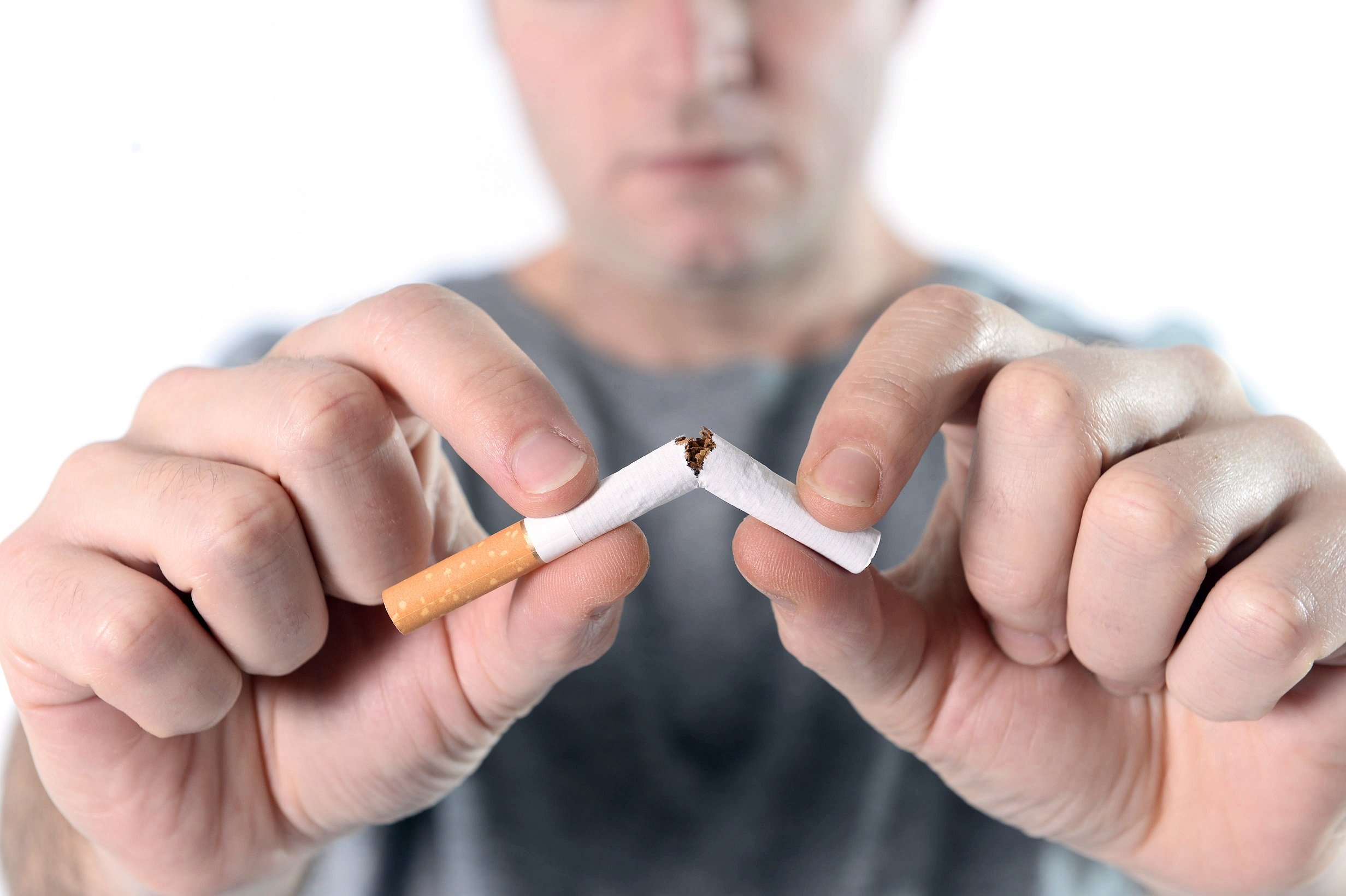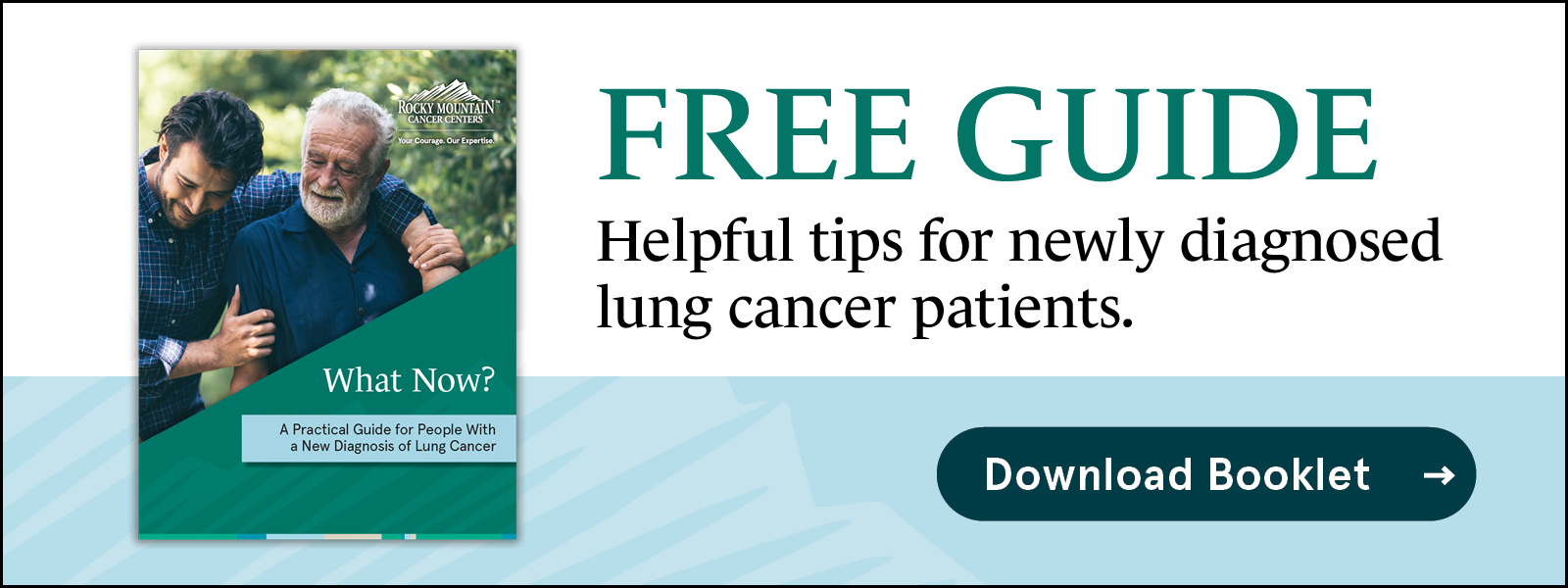The Leading Cause of Lung Cancer Deaths? Yes, It’s Smoking
8 min read

It’s no secret that smoking is bad for your health. Warnings are right there on every pack of cigarettes, telling you that smoking may cause cancer, heart disease, stroke, diabetes, and chronic obstructive pulmonary disease (COPD), such as emphysema or chronic bronchitis. According to the Centers for Disease Control and Prevention, more than 16 million people in the U.S. have a disease related to smoking.
While cigarette and tobacco use are linked to at least 14 types of cancer, lung cancer is the leading cause of cancer-related deaths, and the numbers are more than triple that of the second-leading cause of cancer death: breast cancer. The primary cause of lung cancer? Smoking.
Up to 90% of lung cancer deaths are linked to smoking cigarettes. It doesn’t matter how many cigarettes you smoke a day or how little time you’ve smoked; you could still be at risk for lung cancer. Smoking can also cause lung cancer and other health problems in nonsmokers around you.
Read more: Here's What You Need to Know About Smoking and Lung Cancer
To lower your risk for lung cancer and protect the people around you, quit smoking and talk to your doctor to determine if you're eligible for lung cancer screening. It's also a good idea to take steps to prevent exposure for yourself and others to secondhand and thirdhand smoke. If you’re one of approximately 2,500 Coloradans diagnosed with lung cancer every year (2022 stats from the American Lung Association), Rocky Mountain Cancer Centers (RMCC) can help.
Facts About Lung Cancer and Smoking
While anyone can develop lung cancer, decades of statistics show that smoking and lung cancer are intertwined.
- All smokers are up to 30 times more likely to develop lung cancer than nonsmokers.
- Male smokers are as likely to develop lung cancer as female smokers.
- The longer you smoke and the more often you smoke, the more likely you are to develop lung cancer.
- Tobacco smoke contains up to 7,000 chemicals, many of which are toxic, radioactive, or known to cause cancer.
Because lung cancer causes few symptoms until the disease is advanced, people often die within a year of diagnosis. Screening for lung cancer in high-risk individuals decreases mortality by up to 20% because the disease is caught in more treatable stages.
See if you are eligible for lung cancer screening.
New Lung Cancer Cases in Decline in Colorado
Fewer Coloradoans are diagnosed with lung cancer today compared with five years ago. In a 2022 report, the American Lung Association (ALA) found a 9% improvement over five years. The association ranks the state fourth in the nation for new lung cancer cases.
Among the ALA’s other findings:
- Colorado’s five-year survival rate for lung cancer is 28%, which is higher than the 25% national average. Survival rates have improved in Colorado 17% over five years.
- Lung cancer is detected earlier in Colorado than most other states, with 29% of cases found at an early stage. The national average is 26%.
- The number of lung cancer screenings in Colorado lags behind the national average. Only 5% of Coloradoans at high risk of lung cancer were screened – compared with 6% nationwide.
Secondhand Smoke Also Causes Lung Cancer
 Secondhand smoke spreads when you breathe out as you smoke – but it can also spread directly from cigarettes, cigars, and pipes. Approximately 25% of people in the U.S. are exposed to secondhand smoke. Just 30 years ago, the rate was 90%. Whatever the rate, the effects of secondhand smoke are still dangerous. Only five minutes around secondhand smoke can damage your lungs. In adults who don’t smoke, secondhand smoke causes:
Secondhand smoke spreads when you breathe out as you smoke – but it can also spread directly from cigarettes, cigars, and pipes. Approximately 25% of people in the U.S. are exposed to secondhand smoke. Just 30 years ago, the rate was 90%. Whatever the rate, the effects of secondhand smoke are still dangerous. Only five minutes around secondhand smoke can damage your lungs. In adults who don’t smoke, secondhand smoke causes:
- A 25% to 30% chance of developing heart disease – even brief exposure can trigger a heart attack
- Nearly 34,000 premature deaths from heart disease a year
- More than 8,000 deaths from a stroke a year
- More than 7,300 deaths a year from lung cancer
Secondhand smoke is even more dangerous for children. It can cause problems, such as:
- More frequent or worsening asthma attacks
- Ear infections
- Respiratory infections like bronchitis and pneumonia which cause up to 15,000 hospitalizations a year
- Sudden infant death syndrome (SIDS) which results in an average of 430 deaths annually
Additionally, secondhand smoke is dangerous for pregnant women, causing up to 1,000 infant deaths and increasing the risk of babies being born underweight.
Thirdhand Smoke is a Risk Too
While the risks of secondhand smoke have been shared for years, a growing number of health professionals are sounding the warning about a lesser-known threat: thirdhand smoke. You might think you are not directly exposing family members to secondhand smoke by only smoking when they aren’t at home. However, thirdhand smoke – the residue left over from smoking – is also dangerous.
When you smoke a cigarette, the smell of smoke stays on you and everything around you at the time. That smell might be the smallest problem with thirdhand smoke. The residue from cigarette smoke can contain more than 250 different chemicals, many of which are known to cause cancer. Children and pets are especially at risk from thirdhand smoke, as they are most likely to spend time on the floor, where the residue collects.
Even if all your smoking occurs outside, you are still bringing thirdhand smoke inside with you. One recent study found that people in a nonsmoking movie theater were exposed to the equivalent of secondhand smoke from one to 10 cigarettes over the course of the film due to thirdhand smoke from people’s clothing, hair, or skin. The researchers conclude that smaller spaces, such as houses or cars, likely have much higher concentrations of thirdhand smoke, even without any indoor smoking.
Other Risk Factors and Causes of Lung Cancer
While smoking is the main cause of lung cancer, these other substances can also cause lung cancer and raise your risk if you smoke:
- Radon is the largest nonsmoking-related cause of lung cancer in the U.S. An estimated 21,000 people die from radon-related lung cancer a year, and more than 10% of those deaths are in people who never smoked. Radon is a naturally occurring clear and odorless gas that can seep into your home or workplace through the ground. You can test for radon with a kit from a hardware store or hire a professional to do it. If your home has high levels of radon, you can install special ventilation to help lower them.
- Workplace contaminants are another cause of lung cancer. If you are exposed to substances like asbestos, arsenic, chromium, diesel exhaust, silica, or other cancer-causing materials, you can limit your exposure by using proper ventilation and protective equipment.
- Family history of lung cancer may put you at a higher risk of developing lung cancer. If you previously had lung cancer, you also have a higher risk of developing it again.
- Radiation to the chest, whether for lung cancer or another type of cancer, increases your risk of lung cancer.
Vaping Isn’t a Safe Smoking Alternative
As vaping has become more popular in the U.S., some smokers have switched to the new “e-cigarettes.” For heavy smokers, vaping is cheaper, and marketing has touted the devices as being less harmful than cigarettes. However, a 2021 overview of current research found that vaping fluids contain cancer-causing compounds or chemicals, including formaldehyde, that become carcinogenic when heated by the vaping device. The researchers concluded that “there is a clear reason for concern” that vaping may cause lung cancer, especially given how new the devices are and the lag time it takes for lung cancer to develop in smokers. Additionally, the vapor produces some chemicals present in secondhand and thirdhand smoke, possibly creating similar dangers for non-vaping loved ones.
Take Steps to Reduce Your Lung Cancer Risk
Quitting smoking is by far the most important thing you can do to minimize your risk of developing lung cancer. Other things you can do to lower your risk include:
- Address insulin resistance – when your body can’t convert sugar in the blood to energy.
- Avoid secondhand and thirdhand smoke.
- Test your home for radon and fix it to reduce radon levels.
- Wear safety equipment as directed if you work with chemicals that can cause lung cancer.
📖 Related Read: What are the Symptoms of Lung Cancer?
Be Aware of Lung Cancer Symptoms
Although lung cancer more commonly develops in people who have been smoking for years, any tobacco usage increases your risk. If you or a loved one are experiencing one or more of the following lung cancer symptoms, don’t postpone seeing a medical provider.
- Chest pain
- Chronic or worsening coughing
- Coughing up blood
- Extreme fatigue
- Recurrent pneumonia
- Shortness of breath
- Swollen lymph nodes
- Unexplained weight loss
- Wheezing
Learn more about unexpected lung cancer symptoms.
Talk to your primary care physician about whether you qualify for lung cancer screening based on your smoking history. And, discuss a plan for how you can quit using tobacco.
If you or a loved one has received a lung cancer diagnosis our team of specialists throughout Colorado is here to help.
Updated -- October 2023

